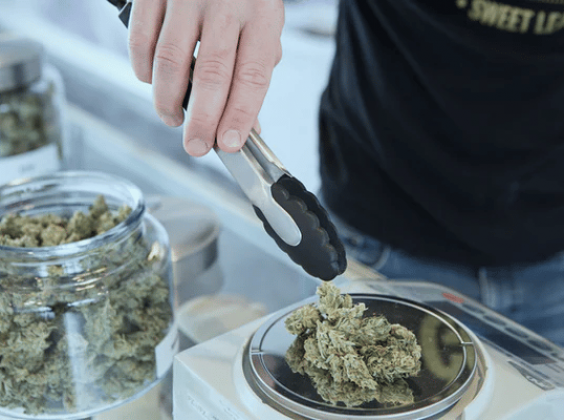
Pharmacokinetics and pharmacodynamics, although unnecessarily difficult words to spell and pronounce, aren’t overly difficult concepts to grasp. Pharmacokinetics is often described by people as ‘what the body does to the drug’, meaning the process of extraction through to excretion. Quite oppositely, pharmacodynamics entails ‘what the drug does to the body and relates to the binding of receptors, effects felt by your bodily receptors and chemical interactions within the brain. These are both influenced by patient-related factors including genetics and age, as well as drug-related properties including marijuana’s THC/CBD content. Consequently, it is critical that medical specialists prescribe specific doses of medicinal cannabis to different individuals contingent on various factors.
As marijuana affects everyone differently, it is pivotal that correct dosages are administered so as to avoid any negative side effects. For example, an elderly person is far more likely to experience an adverse reaction to cannabis than they would have likely had as a teenager. As a result, a patient must be individually assessed by a medical professional to gauge their risk factors and determine their candidacy for medical cannabis. Usually, dosing is tailored to individual patients, with the standard advice being “start low, go slow,” whereby the patient begin using medical cannabis at minimal dosage and then slowly builds their way up to the correct dose for their own threshold and therapy. The average patient consumes 20-25mg of THC. This can be either THC on its own or combined with CBD. It is likely that elderly people with little to no tolerance to THC would be dosed at a much lower level (approx. 5-10mg per day) than those who are younger or have built up a tolerance to the drug (approx. 30-35mg per day).
Cannabis can be consumed in a plethora of ways, from smoking or vaporising the original flower to swallowing an oil or capsule. Depending on the method of consumption, the half-life and intensity of effects differ very noticeably. Once inhaled, cannabis almost instantly flows through the lungs and trickles into the alveoli, where it then rapidly enters the bloodstream and takes effect on the brain’s endocannabinoid system. Alternatively, after swallowing a capsule, for example, the product follows a slower pathway as it is absorbed into the bloodstream following the digestive system rather than the respiratory system. This process involves absorption into the digestive tract and then metabolisation in the liver before finally being transported to the brain.

Once entered the brain, CBD and THC bind to cannabinoid receptors (CB1 and CB2 receptors) within the endocannabinoid system. Since the cannabinoid receptors play a large role in dopamine and norepinephrine levels (hormones responsible for rewards and motivation), cannabis results in sensations of relaxation, euphoria, pain modulation and other therapeutic benefits. After smoking THC and CBD, the effects not only come up faster, but they are also more intense and do not last as long as oral consumption. Depending on the individual, the effects that cannabis has on the brain last roughly around 3-4 hours. Conversely, after oral administration the effects can last up to 12 hours, providing a far more subtle sensation. This is not dissimilar to the idea of slowly enjoying a cappuccino as opposed to taking shots of coffee. Just like food, water and coffee, cannabis and the chemical compounds it contains do not remain in the body forever and are eventually excreted.

Marijuana takes a while to leave the bloodstream when compared to most other substances that enter our bodies. It takes approximately five days for 80-90% of the total THC to be excreted, and a similar duration for orally ingested CBD. For comparison, it takes only six hours for the same amount of Panadol to be expelled from our system. Over 65% of cannabis is excreted as faeces and 20% as urine, leaving 15% of the THC/CBD content excreted as sweat, breath and other escape routes.
A half-life is a good measure of how long it takes for the body to metabolise THC. Despite cannabis having a relatively quick effect on our brain, complete elimination from our bloodstream can take days or even weeks after consumption. An individual’s consumption patterns can affect the half-life of THC in his or her system. it. Regular users may take up to 13 days to metabolise half of their body’s THC whereas modest users can remove half of the substance in under two days. CBD also has a long half-life of one to two days, however, this does not increase disproportionately with regular intake.
Not all of the CBD and THC within the plant, oil or pill that is consumed is fully extracted by your body and used for therapeutic purposes. THC bioavailability averages 30%, meaning that less than half of the total THC is extracted from the original product, across all consumption methods. The higher the bioavailability, the less quantity of the product that is required to obtain the same therapeutic benefits. The bioavailability differs greatly depending on the method used for consumption.
https://www.health.state.mn.us/people/cannabis/docs/practitioners/dosagesandcompositions2018.pdf
https://pubmed.ncbi.nlm.nih.gov/31606008/
https://caclinics.com.au/training/module-5-dosing/
https://www.ncbi.nlm.nih.gov/pmc/articles/PMC2689518/
https://www.medipharmlabs.com/news/blog/post/4488/the-bioavailability-of-cannabis-explained
https://www.fundacion-canna.es/en/routes-administration-and-cannabis-products-therapeutic-purposes
https://www.frontiersin.org/articles/10.3389/fphar.2018.01365/full

Stay up to date with medicinal CBD and alternative medicine in Australia.